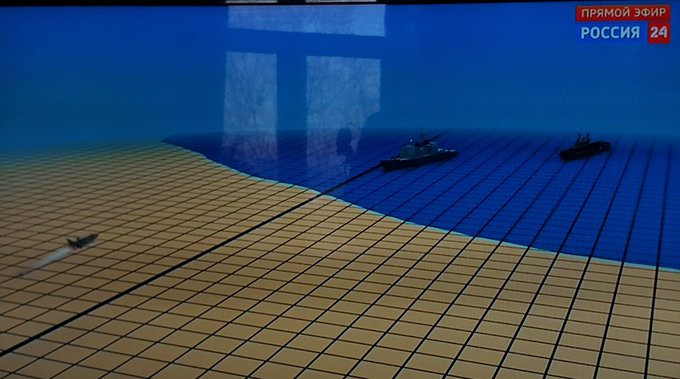En su exposición anual ante el parlamento Ruso, el presidente de ese país, Vladimir Putín presentó formalmente su nueva generación de misiles hipersónicos, con capacidad nuclear, denominados SARMAT y AVANGARD. Velocidades supersónicas, capacidad para llevar hasta 15 cabezas de guerra en cada vector, la maniobrabilidad y capacidad de planeo de los “glide vehicles” para evadir los sistemas de defensa aérea del oponente y la posibilidad de alcanzar cualquier objetivo alrededor de la tierra, volando tanto por encima del polo norte como el polo sur, son algunas de las características destacadas de estos poderosos sistemas de armas.
Russia has tested an array of new strategic nuclear weapons, he announced, marking a technological breakthrough that could boost the Kremlin’s global position and raise Western concerns about a potential renewed arms race in the 21st century.
As the U.S. responds to advances by Russia and China, and tensions continue to simmer over North Korea, vast sums are being spent.
The U.S Defence Department’s request for the upcoming fiscal year is $686 billion — a jump of 4.7 per cent from 2017. That spend is increasingly focused on missile defence systems and naval expansion to 350 ships. Citing new research from military research outfit Jane’s, CNBC reports that in 2018 the Kremlin will set aside $43 billion for defence. China will fork out $203 billion in 2018, up six per cent on its 2017 figure.

Among Russia’s new weapons are a nuclear-powered cruise missile, a nuclear-powered underwater drone and new hypersonic missiles that Russia claims have no equivalent elsewhere in the world.
He said the creation of the new weapons has made NATO’s U.S.-led missile defence “useless,” and means an effective end to what he described as Western efforts to stymie Russia’s development.
“I want to tell all those who have fuelled the arms race over the last 15 years, sought to win unilateral advantages over Russia, introduced unlawful sanctions aimed to contain our country’s development: all what you wanted to impede with your policies have already happened,” Putin said. “You have failed to contain Russia.”

He said that the nuclear-powered cruise missile tested last fall has a “practically unlimited” range and high speed and manoeuvrability allowing it to pierce any missile defence.
The high-speed underwater drone also has an “intercontinental” range and is capable of carrying a nuclear warhead that could target both aircraft carriers and coastal facilities, he added.
Putin said its “very big” operational depth and a speed that is at least 10 times higher than any other vessel would make it immune to enemy intercept.
A computer video showed the drone being launched by a submarine, cruising over the seabed, hitting an aircraft carrier and also exploding near the shore.

Putin noted that the tests of the compact nuclear reactor to power the new drone were completed last fall.
The missiles on these drones carry 100-megatons of power, Sky News reported — which is 6,500 more powerful than the explosion that wiped out Hiroshima.
Putin added, to applause, that names for the nuclear-powered cruise missile and the drone haven’t yet been chosen, and suggested that the Defence Ministry run a nationwide contest for the best names.

Another new weapon called Avangard is an intercontinental hypersonic missile that would fly to targets at a speed 20 times the speed of sound and strike “like a meteorite, like a fireball,” he said.
Putin said that the weapon is capable of performing sharp manoeuvres on its way to targets, making it “absolutely invulnerable for any missile defence system.”
Russia also tested a new heavy intercontinental ballistic missile called Sarmat, he said, adding that its range allows it to fly over both the North and the South poles to reach any target. He said it carries more nuclear warheads than its Soviet-era predecessor, known in the West as Satan.
Another new weapons system, called Kinzhal, already has been deployed in Russia’s Southern Military District. Putin added that it’s a hypersonic missile carried by an aircraft that flies at a speed 10 times of the speed of sound and has a range of 2,000 kilometres away.

The Russian leader emphasized that the development of new weapons that have no equivalent in the West came in response to the U.S. withdrawal from a Cold war-era treaty banning missile defences and U.S. efforts to develop a missile defence system.
He emphasized that Russia is concerned about the Pentagon-led nuclear review released earlier this year that envisaged the development of low-yield nuclear weapons, saying that it could lower the threshold for using nuclear weapons.
In other recent developments, Russia’s Defence Ministry has announced that its fifth-generation fighter jets, the Su-57s, have been sent to Syria for combat testing.
And in February, the ministry posted a video to YouTube of an interceptor missile being launched in Kazakhstan, which is said to upgrade the present weapons shield that guards Moscow.
“We will interpret any use of nuclear weapons against Russia and its allies no matter how powerful they are, of low, medium or any other yield, as a nuclear attack,” Putin said Thursday. “It will trigger an immediate answer with all the consequences stemming from it. No one should have any doubts about it.”

He said that Russian military experts and diplomats would be ready to discuss new weapons systems with their U.S. counterparts.
“We aren’t threatening anyone, we aren’t going to attack anyone, we aren’t going to take anything from anyone,” he said. “The growing Russian military power will guarantee global peace.”
Fuente: http://nationalpost.com


